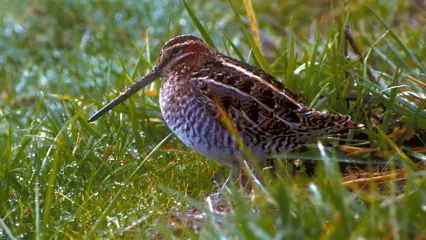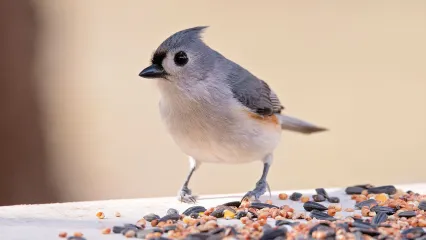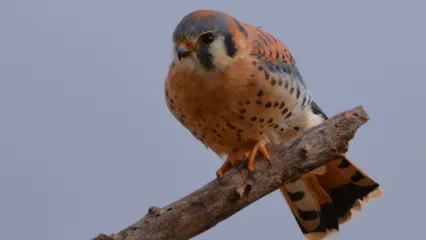
Description
Wilson's snipe (Gallinago delicate) has longer legs, stripes on its crown and back, and dark barring on chest with white flanks and an unmarked belly versus the American woodcocks have shorter legs and a rusty colored belly. Snipes' buff and brown plumage allows them to camouflage into their surroundings and makes them virtually undetectable. Wilson's snipes will remain hidden in cover until you are nearly on top of them, and then they will flush. They have an unusual zigzag pattern when they take off and are crying to escape predators. In flight, the Wilson's snipe can reach roughly 60 mph.
Wilson's snipes feed around dawn and dusk, and they sleep throughout much of the day. They probe the ground looking for earthworms and other invertebrates. They have a flexible bill chat can open at the tip but stay dosed at the base, which allows them to grab objects. Snipes are also able to slurp through their bills as if it were a straw.
Male snipes display by flying through the sky and making a whistling noise. This is caused by air moving over specially adapted tail feathers whenever the bird reaches a speed of about 25 mph.
Habitat
Wilson's snipes can be found along and in marshes, ponds and low-lying damp areas. Snipes nest on the ground, and they build a nest by digging slight depression in the soil and then incorporating grasses.
The Wilson's snipe population in Oklahoma during the winter migrates co northern North America during the summer months. While the Wilson's snipe population is steady, these birds depend on wetlands, and the draining and conversion of wetlands is a concern to the species.
Life Cycle
A female will lay two to four eggs, which she will incubate for 18-20 days. The female tends to the eggs and nestlings, but once the young reach the age of fledglings, the adult snipes will split the duties. The male snipe will care for the oldest, and the female will care for the youngest. Adults will fake injuries to lure predators away from the nest.


